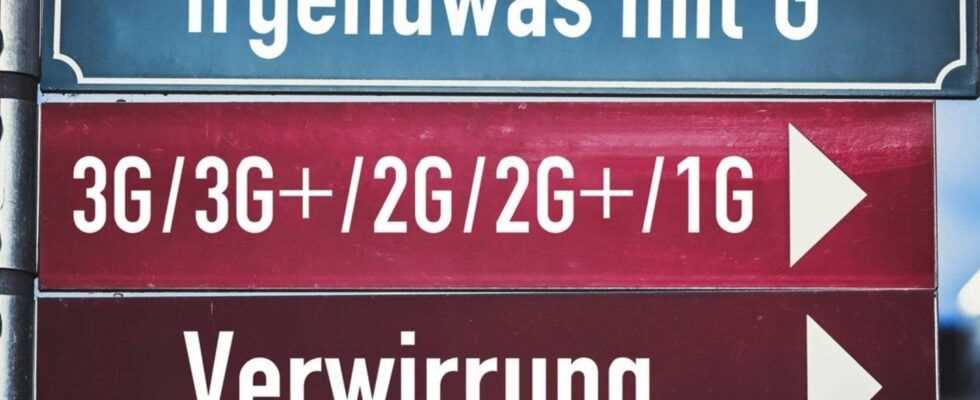Corona rules
That means 3G, 2G, 2G-Plus and Co.
Something with G: For many people, the confusion about the new Corona rules is now perfect.
© imago / Christian Ohde
The fourth corona wave is currently rolling over Germany. Now some new rules follow: What do 3G, 2G or 2G-Plus mean in concrete terms?
On Thursday, the Bundestag in Berlin passed a new legal basis for combating pandemics. The galloping corona infection numbers in almost all federal states was an occasion for politicians to sharpen up in some areas significantly. However, other tools, such as the option of a comprehensive lockdown, have been removed. The basic concept, however, remains the same: the individual state governments can implement the measures for themselves due to the regional infection rate.
With the help of hospitalization rates, the federal states can also introduce 3G, 2G, 2G-Plus rules for certain areas. For a rate above 3, for example, 2G should be applied across the board, above 6 2G-Plus and above 9 partial lockdowns should be imposed. In addition, some federal states are still using 3G-Plus or 3G and calls for 1G can also be heard. What is behind the individual measures? An overview.
3G: vaccinated, recovered, tested
The 3G rules have long been the measure of all things and are still used today, for example in the workplace. So anyone who has been fully vaccinated, recovered or tested is allowed to go to the office or the workshop. Either a valid vaccination or genesis certificate must be presented as proof. Anyone who was neither sick nor vaccinated can undergo a PCR (maximum 48 hours old) or rapid test (maximum 24 hours old) and – of course, only if the test result is negative – participate as a person tested.
3G-Plus: Vaccinated, recovered, PCR-tested
The next level of the Corona rules is the 3G-Plus variant, which is currently only used sporadically in federal states and will probably disappear from everyday life in the near future based on the new legal basis. The difference to normal 3G: Only PCR tests are accepted. These are more precise and safer than quick or self-tests, but also more expensive and less flexible.
2G: Vaccinated, recovered
2G only includes people who have been vaccinated against the virus or who have already recovered from the disease. The 2G rule is currently part of heated discussions. Hamburg was the first to use the 2G option model, and some federal states have since followed suit. The option model leaves it to the restaurateurs and organizers to decide for themselves whether they want to introduce 2G in their rooms. The advantages: there is no need to wear a mask or distance rules. However, those who have been tested have to stay outside. Due to the new rules, this will apply across the board for participation in culture, leisure and sport with a hospitalization value of over 3 in the federal states.
2G-Plus: Vaccinated, recovered plus tested
The next higher escalation level, hospitalization rate over 6, entails the 2G plus rule. The same applies to culture, leisure and sport: only those who have been vaccinated or recovered and can also show a negative test are allowed to participate. So far, however, a rapid antigen test is sufficient, which is now available once a week free of charge. Presenting a PCR test is so far not absolutely necessary, but of course it doesn’t do any harm.
1G: Tested
The so-called 1G rule is required by individual politicians and experts. Neither the vaccination nor the convalescence status is taken into account here. Only those who have been tested are allowed to participate. In practice – both in the federal bill and in the individual countries – this variant is currently not (yet?) Planned. In some cases, however, individual clinics and catering establishments are already relying on this idea.
